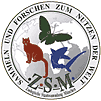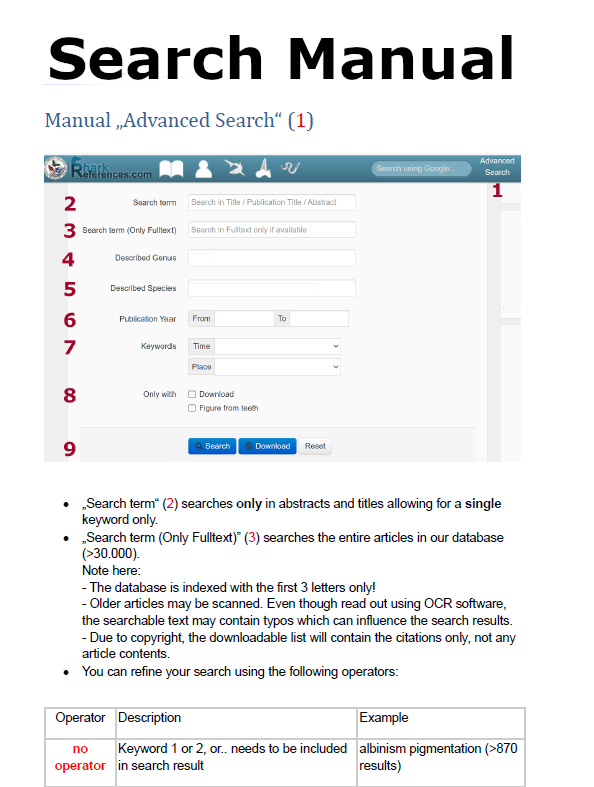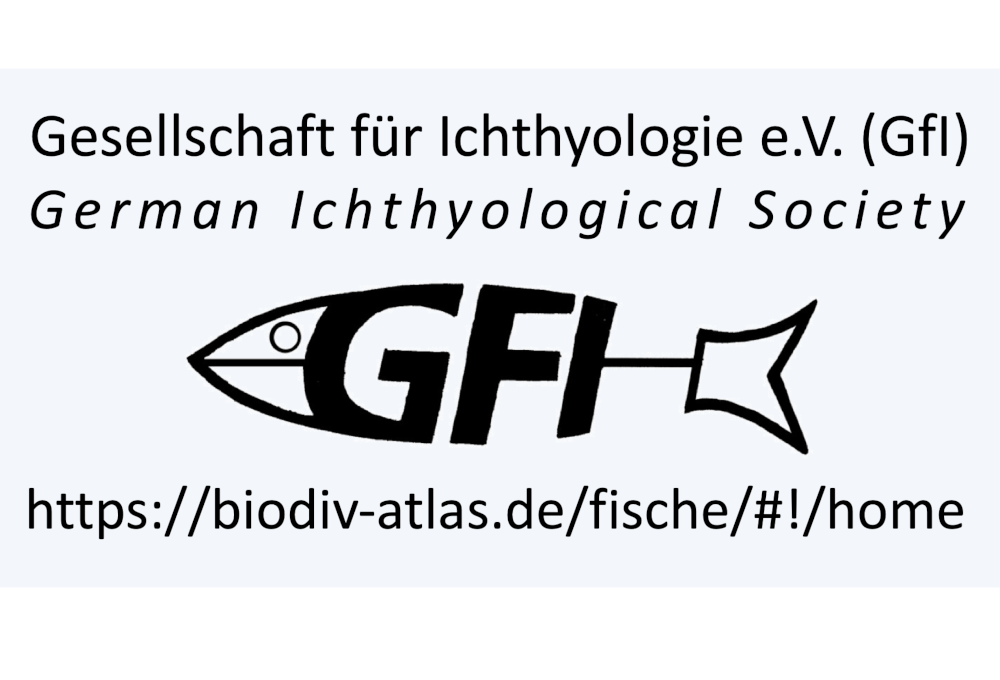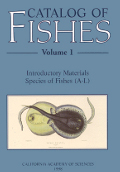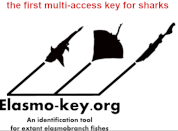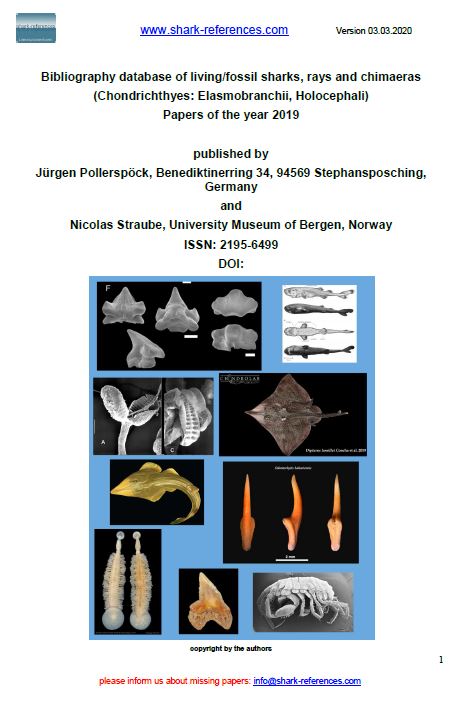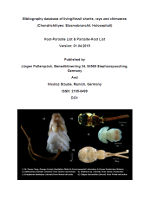Catalogue of the fishes in the British Museum. London, British Museum(Natural History). Vol. 8: 549 p.
Notes on the fins of elasmobranchs, with considerations on the nature and homologues of vertebrate limbs. Transactions of the Zoological Society of London, 10, 439–484
Redogörelse för den Japanska Fisksamlingen i Upsala Universitets Zoologiska Museum. Bihang till Kongl. Svenska vetenskaps–akademiens handlingar, 13(4), 1–54

Über die systematische Stellung und über fossile Reste der Gattung Pristiophorus. Zeitschrift der Deutschen Geologischen Gesellschaft, 42, 86–120

Die Kopulationsglieder der Selachier. Zeitschrift für wissenschaftliche Zoologie, 70, 592–674
Mitteilungen zur Kenntnis der Copulationsglieder bei den Selachiern. Anatomischer Anzeiger, 19, 299–307
A review of the Elasmobranchiate fishes of Japan. Proceedings of the United States National Museum, 26(1324), 593–674
Japanische Plagiostomen. Sitzungsberichte der Kaiserlichen Akademie der Wissenschaften, Mathematisch–Naturwissenschaftliche Klasse, 117(1), 637–710
A synopsis of the sharks of the Family Squalidae. Annals and Magazine of Natural History, (Series 8), 2(7), 39–57
Das Zentral-Nervensystem der Selachier als Grundlage für eine Phylogenie des Vetebratenhirns. II. Die übrigen Paläoselachier. Nova Acta, Abhandlungen der Kaiserlichen Leopoldinisch-Carolinischen Deutschen Akademie der Naturforscher, 94(1), 1–112
Zur Kenntnis des Neurocraniums der Pristiden und Pristiophoriden. Zoologische Jahrbücher. Abteilung für Anatomie und Ontogenie der Tiere, 33(2), 239–360
The Plagiostomia (Sharks, Skates and Rays). Memoirs of the Museum of Comparative Zoology at Harvard College, 36, 1–528
A catalogue of the fishes of Japan. Journal of the College of Science, Imperial University, Tokyo, 33, 1–497

On the calcification of the vertebral centra in sharks and rays. Philosophical Transactions of the Royal Society of London, Series B, Containing Papers of a Biological Character, 210, 311–407
Record of fishes obtained by David Starr Jordan in Japan, 1922. Memoirs of the Carnegie Museum, 10(2), 93–346

Fishes of Japan, collected in 1901. Transactions of the Pacific Committee of the Academy of Sciences of the U.S.S.R (=Trudy Tikhookeanskogo komiteta), 2, 1–176

The Elasmobranchiate fishes of north China. The Science reports of National Tsing Hua University. Series B: Biological and psychological sciences, 1(5): 133–177, Pl. 1–6.

Preliminary notes on the fishes of Chekiang (Elasmobranches). Contributions from the Biological Laboratory of the Science Society of China.(Zoological Series), 9(3): 87–117
Interrelationships of the elasmobranchs with a key to the Order Galea. Bulletin of the American Museum of Natural History, 74, 25–138
Revisione degli squali del Museo civico di Milano. Atti della Società Italiana di Scienze Naturali e del Museo Civico di Storia Naturale di Milano, 77(4), 283–318
Contributions to the biology of the Philippine archipelago and adjacent regions. The fishes of the groups Elasmocephalii, Holocephali, Isospondyli, and Ostariophysi obtained by the United States Fisheries Steamer "Albatross" in 1907 to 1910, chiefly in the Philippine islands and adjacent seas. Bulletin of the United States National Museum, 100, i–x, 1–879

Das Labyrinth von Pristiophorus japonicus Günther. Gegenbaurs Morphologisches Jahrbuch, 86, 259–286
A nominal list with distribution of the fishes of Suruga Bay, inclusive of the freshwater species found near the coast. [In Japanese with English summary] Japanese Journal of Ichthyology, 1(5), 314–338


A review of the sharks of Taiwan. Biological Bulletin Tunghai University Ichthyology Series, 1, 1–102
A survey of vertebral numbers in sharks. Proceedings of the United States National Museum, 116, 73–96


FAO Species Catalogue. Vol 4: Sharks of the world, Part 1 - Hexanchiformes to Lamniformes. FAO Fisheries Synopsis No. 125, 4(1): 1–250

Elasmobranchs of the Sanriku District [in Japanese], Report of Japanese Society for Elasmobranch Studies, 25, 1–9
Interrelationships of the Etmopteridae (Chondrichthyes, Squaliformes). In Pratt, H.L., Gruber, S.H., Taniuchi, T. (Eds.). Elasmobranchs as living resources: advances in the biology, ecology, systematics, and the status of the fisheries (pp. 347–356). NOAA Technical Report NMFS, Vol. 90

Edgeworth's legacy of cranial muscle development with an analysis of muscles in the ventral gill arch region of batoid fishes (Chondrichthyes: Batoidea). Journal of Morphology, 212(3), 213–256
DOI: 10.1002/jmor.1052120304


Functional aspects of placoid scales: a review and update. Australian Journal of Marine and Freshwater Research, 43(1), 123–147
DOI: 10.1071/MF9920123

Squalean phylogeny: a new framework of "squaloid" sharks and related taxa. Hokkaido University Press, 151 pp.

Phylogenetic relationships of the angel sharks, with comments on elasmobranch phylogeny (Chondrichthyes, Squaliformes). Copeia, 1992(2), 505–518

Convergent Evolution of Nasal Structure in Sedentary Elasmobranchs. Copeia, 1993(1), 144–158

Deep-sea chondrichthyans collected from the waters around the Okinawa Islands: results of catch analysis of bottom longlines. Bulletin of the Seikai National Fisheries Research Institute, 71, 51–65
Molecular Phylogeny of the Sharks and Rays of Superorder Squalea Based on Mitochondrial Cytochrome b Gene. Fisheries Science, 62(3), 340–343
DOI: 10.2331/fishsci.62.340

Classification of the recent Elasmobranchii. Copyright Brian Mould 1997

A list of the fishes occurred in the Izu Oceanic Park, the eastern coast of the Izu Peninsula, the Sagami Bay. I. Chondrichthyes. I.O.P. Diving News, 9(11), 2–7

Chondrichthyans of the Ryukyu Islands, Japan. In Seret, B. and Sire, J.Y. (Eds) Indo-Pacific fish biology: Proceedings of the 5th Indo-Pacific Fisheries Conference, Noumea, 1997. Ichthyological Society of France, Paris: 351–365
A checklist of the fishes of the South China Sea. Raffles Bulletin of Zoology, Supplement 8, 569–667

Grouping of sharks based on the location of gill slits-systematics position of the family Alopiidae [in Japanese], Report of Japanese Society for Elasmobranch Studies, 38, 7–13

A catalogue of fishes from the East China and Yellow seas with their local names. Seikai National Fisheries Research Institute, Fisheries Research Agency, Nagasaki, iii+42 pp.(in Japanese)

Checklist of living Chondrichthyes. In W.C. Hamlett (Ed.), Reproductive biology and phylogeny of chondrichthyes: sharks, rays and chimaeras, Vol. 3 (pp. 503–548). Science Publishers, Endfield, USA

Phylogenetic relationships among the major lineages of modern elasmobranchs. In W.C. Hamlett (Ed.), Reproductive biology and phylogeny of chondrichthyes: sharks, rays and chimaeras, Vol. 3 (pp. 1–25). Science Publishers, Endfield, USA
Annotated checklist of deep-sea fishes from the waters around the Ryukyu Islands, Japan. Deep-sea fauna and pollutants in the Nansei Islands. Monographs of the National Science Museum Tokyo, 29, 385–452

Specification of Phylogenetic Interrelations between Skate Rays and Sharks. Journal of Evolutionary Biochemistry and Physiology, 42(2), 128–133
DOI: 10.1134/S0022093006020025

Testing morphologically based phylogenetic theories within the cartilaginous fishes with molecular data, with special reference to the catshark family (Chondrichthyes; Scyliorhinidae) and the interrelationships within them. Molecular Phylogenetics and Evolution, 39(2), 384–391
DOI: 10.1016/j.ympev.2005.09.009
A checklist of the fishes of southern Taiwan, northern South China Sea. Raffles Bulletin of Zoology, Supplement 19, 233–271

Shark tales: A molecular species-level phylogeny of sharks (Selachimorpha, Chondrichthyes). Molecular Phylogenetics and Evolution, 58(2), 207–217
DOI: 10.1016/j.ympev.2010.11.018
Recent records of rare elasmobranch species from Iwate Prefecture [in Japanese]. Report of Japanese Society for Elasmobranch Studies, 48, 28–32
A DNA sequence based approach to the identification of shark and ray species and its implications for global elasmobranch diversity and parasitology. Bulletin of the American Museum of Natural History, 367, 1–262
An illustrated list of the Kagoshima University Museum specimens of Chondrichthyes collected from Kagoshima Prefecture, southern Japan. [In Japanese.] Nature of Kagoshima, 38, 119–138

Sharks of the World – A fully illustrated guide. Wild Nature Press, ISBN 978–0–9573946–0–5: 528pp
An annotated checklist of the chondrichthyans of Taiwan. Zootaxa, 3752, 279–386
DOI: 10.11646/zootaxa.3752.1.17

Fishes of Japan with Pictorial Keys to the Species. Third Edition. Tokyo: Tokai University Press. 2428 pp.
MiFish, a set of universal PCR primers for metabarcoding environmental DNA from fishes: detection of more than 230 subtropical marine species. Royal Society Open Science, 2(7), Article 150088
DOI: 10.1098/rsos.150088
Molecular phylogeny of Squaliformes and first occurrence of bioluminescence in sharks. BMC Evolutionary Biology, 15, Article 162
DOI: 10.1186/s12862-015-0446-6

Systematic Implications of the Anterior Pectoral Basals in Squaliform Sharks (Chondrichthyes: Elasmobranchii). Copeia, 103(4), 874–885
DOI: 10.1643/CI-14-138

Morphology and phylogenetic significance of the pectoral articular region in elasmobranchs (Chondrichthyes). Zoological Journal of the Linnean Society, 175(3), 525–568
DOI: 10.1111/zoj.12287

Annotated checklist of the living sharks, batoids and chimaeras (Chondrichthyes) of the world, with a focus on biogeographical diversity. Journal of Fish Biology, 88(3), 837–1037
DOI: 10.1111/jfb.12874
X-ray computed tomography library of shark anatomy and lower jaw surface models. Scientific Data, 4: 170047
DOI: 10.1038/sdata.2017.47

The mitogenomic phylogeny of the Elasmobranchii (Chondrichthyes). Mitochondrial DNA Part A, 29(6), 867–878
DOI: 10.1080/24701394.2017.1376052

Sustainability of threatened species displayed in public aquaria, with a case study of Australian sharks and rays. Reviews in Fish Biology and Fisheries, 28(1), 137–151
DOI: 10.1007/s11160-017-9501-2

Of teeth and trees: A fossil tip-dating approach to infer divergence times of extinct and extant squaliform sharks. Zoologica Scripta, 47(5), 539–557
DOI: 10.1111/zsc.12299

Phylogenetic inferences on the systematics of squaliform sharks based on elasmobranch scapular morphology (Chondrichthyes: Elasmobranchii). Zoological Journal of the Linnean Society, 182(3), 614-630
DOI: 10.1093/zoolinnean/zlx051
A checklist of sharks based on voucher specimens and photographs from Kochi Prefecture (southern Shikoku Island, Japan) [in Japanese]. Report of Japanese Society for Elasmobranch Studies, 55, 31–54

Clasper Morphology of the Japanese sawshark, Pristiophorus japonicus Günther, 1870 (Chondrichthyes: Elasmobranchii). The Anatomical Record, 302(9), 1666–1670
DOI: 10.1002/ar.24082

An identification key to elasmobranch genera based on dental morphological characters Part A: Squalomorph sharks (Superorder Squalomorphii). Bulletin of Fish Biology, 18(1/2), 77–105
Distinct Responses of Elasmobranchs and Ray-Finned Fishes to Long-Term Global Change. Frontiers in Ecololgy and Evolution, 7, Article 513
DOI: 10.3389/fevo.2019.00513
Comparative morphology of labial cartilages in sharks (Chondrichthyes, Elasmobranchii). European Zoological Journal, 87(1), 741–753
DOI: 10.1080/24750263.2020.1844323

The Sawshark Redemption: Current knowledge and future directions for sawsharks (Pristiophoridae). Fish and Fisheries, 21(6), 1213–1237
DOI: 10.1111/faf.12500


Sawsharks (Pristiophoriformes, Pristiophoridae) in the Oligocene and Neogene of Europe and their relationships with extant species based on teeth and rostral denticles. Palaeontos, 33, 57‒163

Body forms in sharks (Chondrichthyes: Elasmobranchii) and their functional, ecological, and evolutionary implications. Zoology, 140, Article 125799
DOI: 10.1016/j.zool.2020.125799

The coracoid bar and its phylogenetic importance for elasmobranchs (Chondrichthyes). Zoologischer Anzeiger, 287, 167–177
DOI: 10.1016/j.jcz.2020.06.004
Pristiophorus japonicus The IUCN Red List of Threatened Species 2021: e.T161634A124518986
DOI: 10.2305/IUCN.UK.2021-1.RLTS.T161634A124518986.en
Setting Conservation Priorities for Marine Sharks in China and the Association of Southeast Asian Nations (ASEAN) Seas: What Are the Benefits of a 30% Conservation Target? Frontiers in Marine Science, 9, Article 933291
DOI: 10.3389/fmars.2022.933291
Placoid scales in bioluminescent sharks: Scaling their evolution using morphology and elemental composition. Frontiers in Marine Science, 9, Article 908237
DOI: 10.3389/fmars.2022.908237

First Record of Elasmobranch Hosts for the Gnathiid Isopod Crustacean Thaumastognathia: Description of Thaumastognathia bicorniger sp. nov. Zoological Science, 39(1), 124–139
DOI: 10.2108/zs210057
Skeletal convergence in thunniform sharks, ichthyosaurs, whales, and tunas, and its possible ecological links through the marine ecosystem evolution. Scientific Reports, 13(1), Article 16664
DOI: 10.1038/s41598-023-41812-z

Fluid dynamic properties of shark caudal fin morphology and its relationship to habitats. Ichthyological Research, 71, 294–304
DOI: 10.1007/s10228-023-00933-1

Morphology and phylogenetic significance of the pelvic articular region in elasmobranchs (Chondrichthyes). Cladistics, 39(3), 155–197
DOI: 10.1111/cla.12528

Sequential trait evolution did not drive deep-time diversification in sharks. Evolution, 78(8), 1405–1425
DOI: 10.1093/evolut/qpae070
Evolution of the batoidea pectoral fin skeleton: convergence, modularity, and integration driving disparity trends. Evolutionary Ecology, 39(1), 111–134
DOI: 10.1007/s10682-025-10330-x

Groundwork for conservation: an updated checklist of Chondrichthyes of Taiwan. Biological Journal of the Linnean Society, 145(4), Article blaf051
DOI: 10.1093/biolinnean/blaf051
